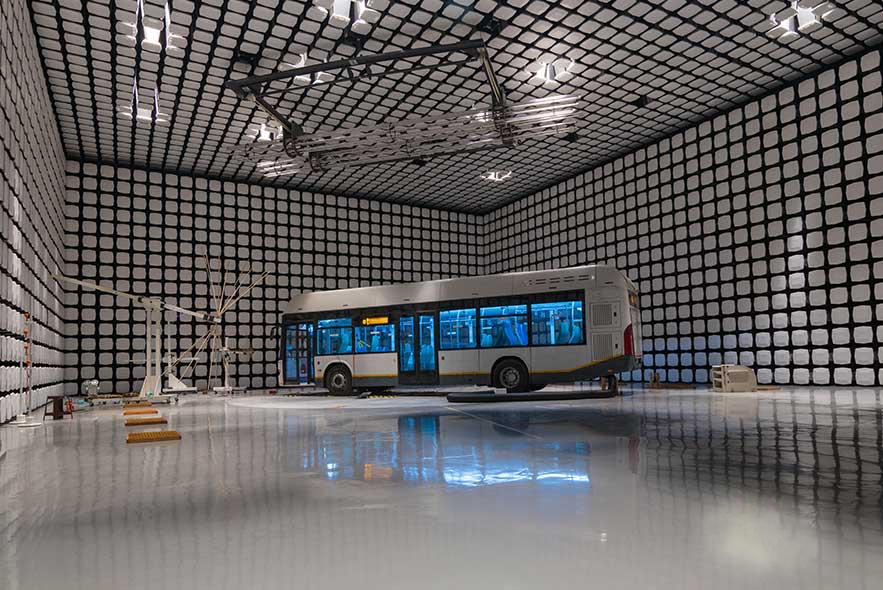Our lights are selected on quality and their compliance with limit values in terms of electromagnetic compatibility (short: EMC). This article explains what exactly EMC is all about and why compliance with the standards is so important.
The key points in short:
• Electromagnetic compatibility includes the factors of interference emission and interference immunity. Only lighting that complies with the limit values and receives at least classification 3 (CISPR25 CLASS 3) is absolutely reliable and safe.
• Possible sources of interference include WLAN signals, radio waves from mobile phones, navigation devices, telematics and radar.
• Our products are at least class 3 or 4, both of which stand for a high level of safety.
What exactly is electromagnetic compatibility?
Every electronic device emits electromagnetic radiation or electromagnetic interference. Electromagnetic compatibility, or EMC for short, describes how electronic devices react with and among each other. A large number of electronic products are installed in every vehicle. Therefore, it must be ensured that mutual interference or even unintentional failures in other devices in the vicinity are avoided. This is called interference emission.
At the same time, the installed devices must be protected from the interference of other sources of radiation so that they function perfectly around other electronic devices. This is also known as interference immunity. Good electromagnetic compatibility is achieved when a product is resistant to interference from other devices and at the same time does not emit interference itself.

What can cause a lighting product to malfunction?
Lighting products can be disrupted by electromagnetic interference sources from vehicle electronics, causing their regular function to be impaired. Using reliable work lights and warning lights is particularly important for emergency vehicles, construction machinery, agricultural vehicles and other work contexts that involve increased risk. Otherwise, failure of the lamps could quickly lead to dangerous situations and, in the worst case, personal injury.
Legal regulations
Within the EU, there is a law for electronic devices that regulates the electromagnetic compatibility of equipment that is being brought onto the roads. Such devices must comply with the relevant protection requirements and specifications for interference emission and interference immunity that have been defined in the standards. The legal regulations apply:
CISPR 25
ISO 7637
ISO 11452
The ECE R10 EU certification symbol also applies to tested devices. This provides information about the electromagnetic compatibility and checks whether the interference emissions and the interference reception of a device are within the limit values. All vehicle electronics must have ECE R10 approval.
What needs to be considered for EMC?
It is essential to observe the CISPR standard for EMC. CISPR 25 is a technical standard on interference emission, which is divided into classifications from 1 (worst) to 5 (best).
Class 5 products meet the highest requirements and can be installed directly next to an antenna, for example. Devices with classification 3 already meet the legal standards and offer reasonable protection in common practice. Their interference emission is so low that other electrical devices are not negatively affected.
Our products mainly belong at least to class 3, many products to class 4 or even 5. They are proven to be absolutely functionally safe and reliable in all applications.
